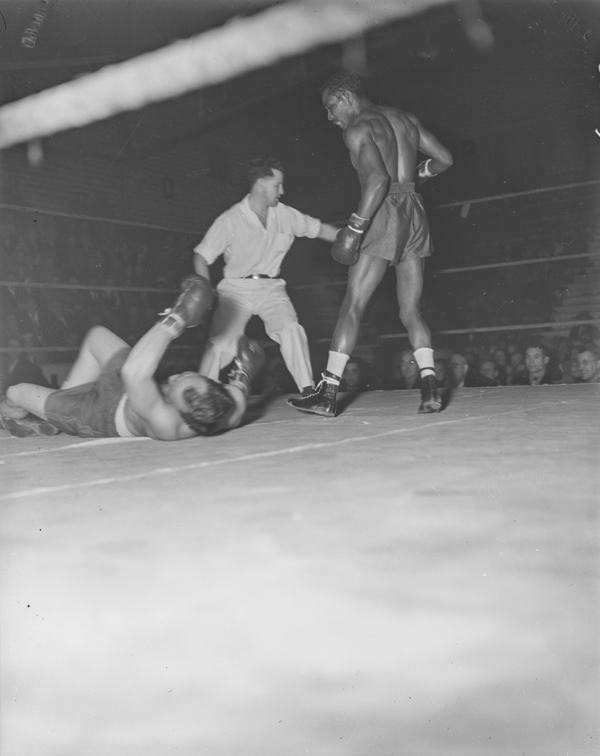Written by: Michael Gourlie, Government Records Archivist, Provincial Archives of Alberta
In the early 1950s, George Dunn appeared frequently on the Edmonton sports pages. Described as a lightning flash, his boxing career lasted only about a decade in Canada, but his contributions to sport continued after he left the ring.
Dunn was born in Raleigh, North Carolina in 1925, the son of William Moses Dunn and Mary Helen High-Dunn. His parents died several months apart in 1926, and he was raised by his siblings. He was working in Hartford, Connecticut at the Pratt and Whitney Aircraft factory in 1943 when he registered for the World War II draft. He served in the US Army for just over two years during the Second World War, seeing action in the Philippines and New Guinea. During this period, Dunn took up boxing to avoid “KP” (kitchen patrol) duties. He became a professional boxer in 1946 and lost only two matches between 1946 and 1948, racking up 14 knockouts. In his early career, he fought against Sonny Boy West and Lil’ Arthur King.




